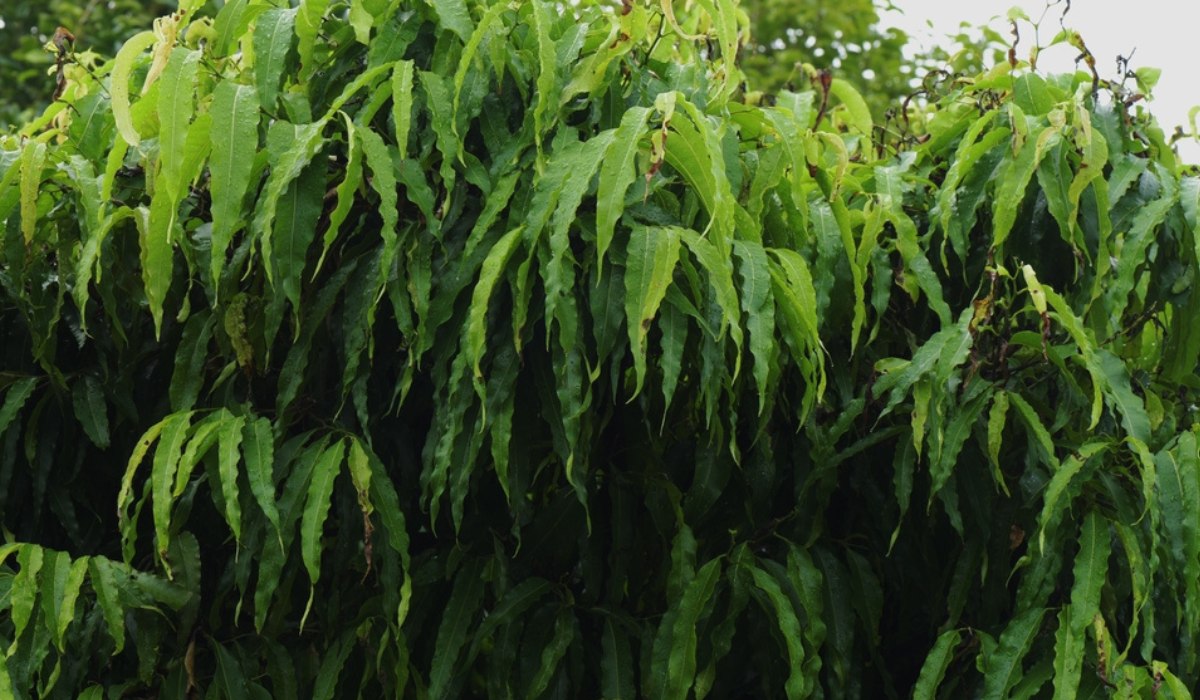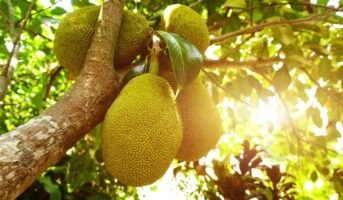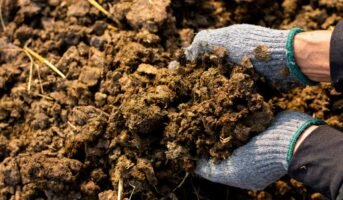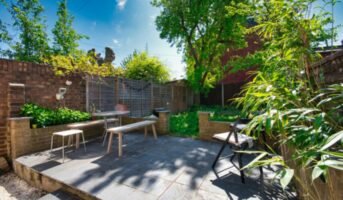Monoon longifolium, native to India and Sri Lanka, can reach heights of 10 to 18 metres (or 30 to 60 feet) by growing slowly.
There are currently two cultivable types. The more striking variety, Var. pendula, has a thin columnar shape unusual for tropical trees due to its straight, slim trunk and short, drooping branches. Var. angustifolia, a less frequent variety, has branches that extend widely and form a pyramidal crown. The bark is smooth and grey.
Lance-shaped with wavy borders, the leaves can be lime green or dark green, depending on their age. They remain on the tree throughout the year and are arranged closely together from the bottom of the tree to the top, covering the trunk with rich greenery.
See also: Why Jatropha integerrima must have a spot in your garden
Facts about Monoon longifolium
| Common Names | False Ashoka, Buddha Tree, Indian Mast Tree |
| Family name | Annonaceae |
| Origin | India and Sri Lanka |
| Plant Type | A tropical, ornamental and perennial tree |
| Height | upto 10-30 metres |
| Climate required | rainfall |
| Soil pH required | 5.5 to 7.5 |
Can Monoon longifolium be grown at home?
Yes, it can be grown at home. Most people grow the Ashoka tree in their households to have peace and tranquillity. If you have a lot of room in your garden, you can select a different variety of Ashoka trees (similar to mango trees). The tree can potentially grow to a width of 20 feet and a height of 30 to 45 feet. The flowers are reddish in colour and have numerous stigmas during the blooming season. The leaves are formed into wreaths and displayed on doorways as door decorations during Hindu festivals.
Monoon longifolium: How to grow Ashoka tree?
- New plants are often grown from seeds, which are viable for just a brief period of time. The ripe fruits are collected and then left out in the open for the rind to decay and soften, making it simple to remove the seeds. The seeds are then cleaned and allowed to air dry in the shade.
- The majority of seeds put in a free-draining potting mix germinate in two to three weeks, and the young seedlings are cared for in a nursery for about a year before being planted outside. When transplanting, care is taken to avoid bruising the vulnerable roots.
- The optimal conditions for it to thrive are full to partial sun exposure and rich, free-draining clay-loam and sandy-loam soils that range in pH from 5.5 to 7.5 and are often slightly acidic to neutral in nature.
- In particular, young plants require watering and wind protection during hot, dry circumstances. Once planted, they can withstand drought well.
How to care for Monoon longifolium?
Climate required for Monoon longifolium
Monoon longifolium grows naturally in subhumid to humid subtropical and tropical climates, typically free of frost, with yearly lows of 14 to 25°C, yearly highs of 25 to 36°C, yearly rainfall of 700 to 4000 mm, and a dry season of no more than 8 months, which can be extended to 12 months with irrigation or groundwater.
Fertilisation
You can use a slow-release fertiliser sparingly, ten inches from the root, every three years to aid in the establishment of your new mast tree. The tree will often develop more slowly if it is not fertilised.
Monoon longifolium benefits and uses
Due to its compact size and beautiful green foliage, the narrowly shaped weeping variation, Monoon longifolium is frequently cultivated as a street tree in India, Sri Lanka, and Southeast Asia. It grows into a tall hedge that can be used as a windbreak, privacy screen, or both when planted closely together.
The wood has a low natural resistance to rot and decay and weighs an average of 590 kilograms per cubic metre (37 pounds per cubic foot), ranging from yellow to grey-white. In addition, the trunk’s diameter is too tiny to allow for practical lumber sawing. According to reports, it can only be used to make lightweight items like pencils and matches. However, it is made into musical drums in some of its natural habitats.
How to plant Ashoka tree?
The Ashoka tree can be propagated by seeds. You can get the seeds from a nursery shop or from pods during the monsoon. Collect the seeds, and rinse and keep them in water overnight. Take a small flowerpot around five to seven inches in diameter. Fill it with well-draining, potting soil. Sow the seeds and place the pot in an area that receives bright sunlight.
Where to plant Ashoka tree at home?
When growing Ashoka tree at home, it is essential to follow the Vastu Shastra guidelines. Planting Ashoka tree in the corner of the main entrance door attracts wealth. Vastu recommends growing the plant in the north direction in the house or around the area. This placement is believed to bring the desired results and positive energies.
FAQs
How are the seeds of Monoon longifolium dispersed?
Birds and feeding bats are drawn to the fruit, and they spread the seed. Despite being widely cultivated outside of its original habitat, there do not seem to be any reports of its escape and naturalisation anywhere.
Why is Monoon longifolium also known as Mast tree?
The bark is smooth, thick, and dark in hue. Due to its suitability for making ship masts, the tree earned the moniker mast tree.
Housing News Desk is the news desk of leading online real estate portal, Housing.com. Housing News Desk focuses on a variety of topics such as real estate laws, taxes, current news, property trends, home loans, rentals, décor, green homes, home improvement, etc. The main objective of the news desk, is to cover the real estate sector from the perspective of providing information that is useful to the end-user.
Facebook: https://www.facebook.com/housing.com/
Twitter: https://twitter.com/Housing
Email: [email protected]











